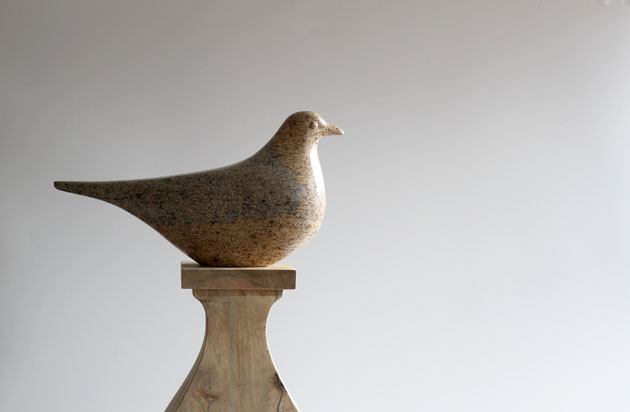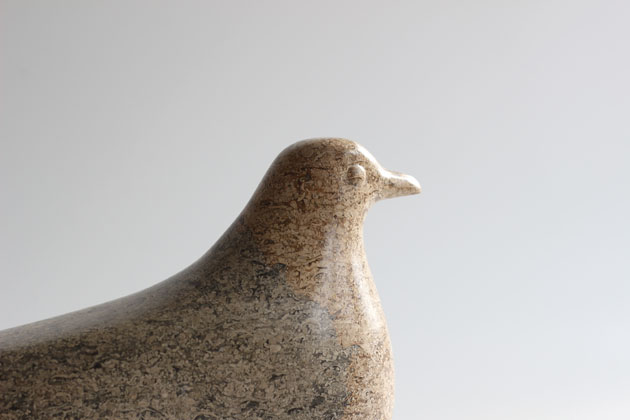Pigeon Sculpture

I think I read somewhere that Pigeons were the first domesticated bird. Darwin wrote much about them in his publication The Variation of Animals and Plants Under Domestication, having for many years bred Pigeons and used them as an example to illustrate the extent of variation in domesticated species.

Perhaps our association with them hasn’t always been a good thing – in recent geological time the most common bird in the world, the Passenger Pigeon, suffered extinction from human activity.
It does seem that we are much too likely to prove the idea that ‘familiarity breeds contempt’. The philosopher Luceius Apuleis, who lived in Ancient Rome, was quoted as saying this, but completed the proverb with ‘while rarity wins admiration’.
Being surrounded by Wood Pigeons and Rock Doves they’re such a familiar sight that perhaps without my knowing they feed into many of my bird sculptures. This time, with Pigeon, it is on purpose and to delight in their features. I watch them, hear them, enjoy them.
The name Pigeon comes from a French word, originating from the Latin ‘Pipeo’ – meaning ‘young, chirping bird’, or ‘peeping chick’. So aptly this describes a Pigeon nest filled with hatchlings.
Pigeon sculpture – carved in Ancaster Weatherbed Limestone – 13″ x 3″ x 7″
